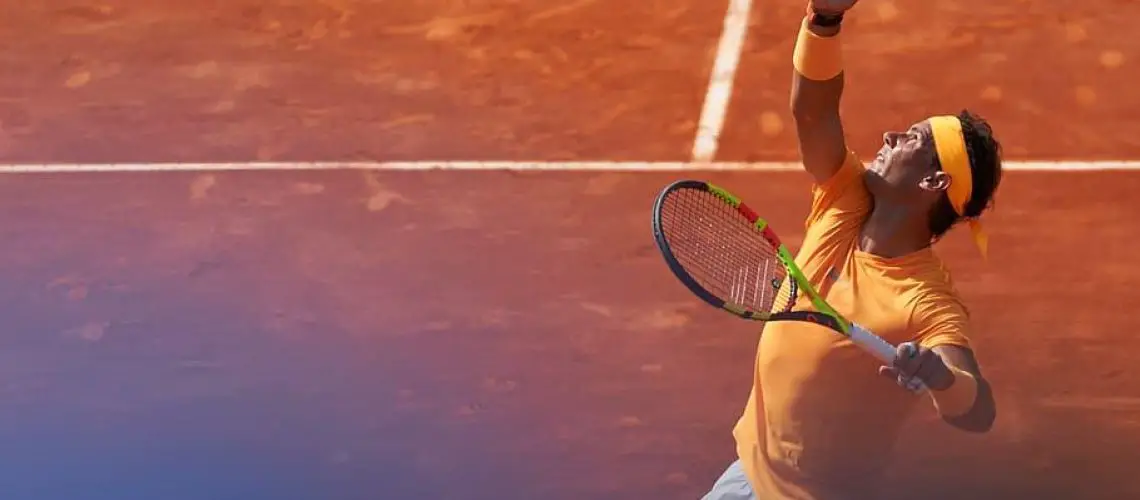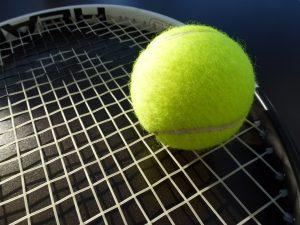We may earn money or products from the companies mentioned in this post.
Introduction

No-tie lacing methods for tennis shoes have become increasingly popular in recent years These innovative systems eliminate the need for traditional shoelaces, offering a convenient and hassle-free alternative With no-tie lacing, you can say goodbye to constantly retying your shoe laces and hello to a more efficient and comfortable experience on and off the court
Benefits of using no-tie lacing systems
No-tie lacing systems offer numerous benefits that make them a game-changer for athletes, fitness enthusiasts, and casual shoe wearers alike Let’s explore some of these advantages:
Convenience and time-saving
Gone are the days of wasting precious minutes trying to tie your shoelaces just right No-tie lacing systems provide ultimate convenience by eliminating the need for tying altogether Simply slip your foot into the shoe, adjust the tension as needed, and you’re good to go This not only saves time but also eliminates the frustration of having to constantly readjust loose or tight shoelaces during physical activities
Enhanced comfort and fit
A proper fit is crucial when it comes to athletic performance or everyday comfort No-tie lacing systems allow you to achieve a customized fit that adapts to your unique foot shape The elastic nature of these laces ensures a snug yet flexible feel, reducing pressure points and discomfort caused by overly tight or ill-fitting traditional laces Say goodbye to blisters and embrace a more comfortable shoe-wearing experience
Improved performance in sports activities
Sports enthusiasts can benefit greatly from using no-tie lacing systems The secure fit provided by these innovative methods keeps your feet firmly in place during intense physical activity, allowing for better control and stability With no worries about loose laces causing trips or distractions, you can focus entirely on your game and maximize your performance
Aesthetic appeal
No-tie lacing systems not only offer functional advantages but also add a touch of style to your footwear These laces come in various colors and designs, allowing you to customize the look of your shoes to suit your personal taste Whether you prefer a sleek monochromatic look or a vibrant pop of color, there’s a no-tie lacing system out there to complement your style
Different No-Tie Lacing Techniques for Tennis Shoes

Elastic laces with lock systems
If you’re tired of constantly tying and untying your shoelaces during intense tennis matches, elastic laces with lock systems can be a game-changer These innovative laces offer a secure fit without the need for traditional knots, allowing you to focus on your game instead of your footwear
Installing elastic laces with lock devices is a breeze Simply thread the elastic lace through the shoe’s eyelets, adjusting the tension to your liking Once in place, secure the lace with the locking mechanism provided by the brand of your choice
While elastic laces provide convenience and ease of use, they do have their drawbacks Some users find that elasticity may cause slight discomfort or pressure points on their feet Additionally, depending on the quality of the product, durability may vary
Popular brands offering elastic lace lock systems include Lock Laces, Xpand Lacing System, and Hickies
Slip-on silicone laces
If you prefer a more flexible alternative to traditional shoelaces, slip-on silicone laces are worth considering These no-tie options allow for easy slip-on and off functionality while maintaining a snug fit throughout your tennis match
The installation process for slip-on silicone laces is straightforward: replace your regular shoelaces with these stretchy alternatives by threading them through each eyelet just like traditional laces Unlike typical knots or locks, silicone laces don’t require any additional adjustments
One advantage of using silicone no-tie laces is their versatility and adaptability to different foot shapes and sizes They also eliminate tripping hazards caused by loose or untied shoelaces However, some users may find that silicone laces tend to loosen over time and may need occasional readjustment
Popular brands offering slip-on silicone lace solutions include HOMAR, Diagonal One, and INMAKE
Self-latching magnetic closure system
For a futuristic touch to your tennis shoes, self-latching magnetic closure systems provide a seamless no-tie solution These innovative closures use magnets to secure your shoes in place, ensuring a snug fit without the hassle of traditional laces
To set up a self-latching magnetic closure system on your tennis shoes, start by attaching the magnetized ends of the closures to each side of the shoe’s opening The magnets will attract and lock together when brought close, creating a secure fastening mechanism
Magnetic closures offer convenience and ease of use, allowing for quick on-and-off functionality However, one potential disadvantage is that debris such as dirt or small metal objects can interfere with the magnet’s effectiveness Additionally, individuals with pacemakers or other medical devices sensitive to magnets should exercise caution when using this type of closure system
Brands that provide self-latching magnetic shoe closures include HICKIES 20 Metallics, Cliq Magnetic Shoelaces, and MagneLace
Tips for Choosing the Right No-Tie System for Your Tennis Shoes

When it comes to choosing the right no-tie system for your tennis shoes, there are a few important factors to consider By taking into account your specific needs and preferences, as well as evaluating the durability, adjustability, and ease-of-use of various options, you can find the perfect solution that suits both your style and functionality requirements
Consider your specific needs and preferences
Firstly, think about the level of physical activity or sport you engage in Different no-tie systems cater to different activities, such as running or playing tennis Understanding how active you are will help you choose a system that provides optimal support and stability
Secondly, take into consideration your preferences in terms of style, color, and design No-tie systems come in a variety of options to match your personal taste Whether you prefer vibrant colors or sleek designs, selecting a system that aligns with your aesthetic preferences will enhance both your performance and confidence on the court
Lastly, keep budget constraints in mind No-tie systems range in price depending on their brand and features By setting a budget beforehand, you can narrow down your choices and avoid overspending while still finding a high-quality option that meets all your requirements
Evaluate the durability, adjustability, and ease-of-use of various options
When it comes to evaluating different no-tie systems for tennis shoes, three key factors should be considered: durability, adjustability, and ease-of-use
Durability is crucial as it ensures long-lasting performance even during intense physical activities Look for systems made from durable materials like high-quality silicone or elastic bands that can withstand frequent use without losing their elasticity or shape
Adjustability is another important aspect to consider Opt for a system that allows you to customize the fit of your tennis shoes according to your comfort level This will help prevent any discomfort, blisters, or unnecessary movement during play
Lastly, ease-of-use is essential in ensuring convenience and saving time Choose a no-tie system that can be easily installed and adjusted without requiring any complex instructions or tools Look for systems with simple mechanisms like elastic laces or locking clips that allow for quick and hassle-free shoe fastening
In conclusion, when choosing the right no-tie system for your tennis shoes, it’s important to consider your specific needs and preferences, as well as evaluate the durability, adjustability, and ease-of-use of various options By taking these factors into account, you can find the perfect no-tie system that not only enhances your performance on the court but also adds a touch of style to your athletic footwear
Frequently Asked Questions About No-Tie Lacing Systems

Are no-tie shoelace alternatives suitable for all types of tennis shoes?
No-tie shoelace alternatives are designed to be compatible with various types of tennis shoes Whether you have low-top or high-top sneakers, running shoes, or even basketball shoes, you can find a no-tie lacing system that will work for you These innovative solutions provide convenience and comfort, allowing you to focus on your game without worrying about constantly tying and retying your laces
Can I use no-tie techniques on regular (non-tennis) shoes?
Absolutely! No-tie lacing systems aren’t limited to just tennis shoes You can also apply these techniques to other types of footwear like casual sneakers, boots, or even dress shoes By using a no-tie lacing system on your regular shoes, you’ll enjoy the same benefits of convenience and ease as you would with sports shoes
Do these alternative lacing methods affect the lifespan of my shoes?
No-tie lacing systems are designed to be durable and gentle on your footwear They utilize elastic materials that allow for flexibility and movement while keeping your shoe securely in place These alternatives help reduce stress on the eyelets and lace holes, which can prolong the life of your shoes compared to traditional laces that may wear out over time
How do I clean and maintain my no-tie lacing system?
Cleaning and maintaining a no-tie lacing system is simple If it gets dirty or starts to lose its elasticity, you can wash it by hand using mild soap and water Gently scrub away any dirt or grime and rinse thoroughly before air-drying It’s important to avoid using harsh chemicals or putting the lacing system in the washing machine, as this could damage the elasticity and overall functionality
Is it possible to convert back to traditional laces after using a no-tie system?
Absolutely! If you decide to switch back to traditional laces, you can easily remove the no-tie lacing system and replace it with regular shoelaces Keep in mind that some shoes may have different eyelet configurations due to the previous use of a no-tie system, so you might need to adjust or adapt accordingly Regardless, transitioning from a no-tie system back to traditional laces is a straightforward process
Useful Links

Kiwi Sneaker No Tie Shoe Laces – White 1 Pair
Running Shoe Lacing Techniques for Better Fit
Top 10 No-Tie Shoelaces for Running Athletes
The Best Way to Lace Running Shoes – Caterpy – Facebook
Hide your Laces for a Cleaner Look – Balthazar
No Tie Elastic Shoelaces | Never Tie Your Shoelaces Again …
10 Ways to Lace Up Your Shoes Creatively
How to Lace Running Shoes (8 Variations for Common …
Ian’s Shoelace Site – Shoe Lacing Methods
No tie shoe laces + FREE SHIPPING
How to Use Lock Laces® the Original Elastic No Tie Laces
Laceez | No Tie Shoelaces & Lifestyle Products
HICKIES – No Tie Elastic Shoelaces
Heel Lock Lacing: How to Lace Running Shoes
Elastic Shoe Laces
Tie-Less Lace Shoes
Rubber Shoelace Shoe Laces No Tie for sale






